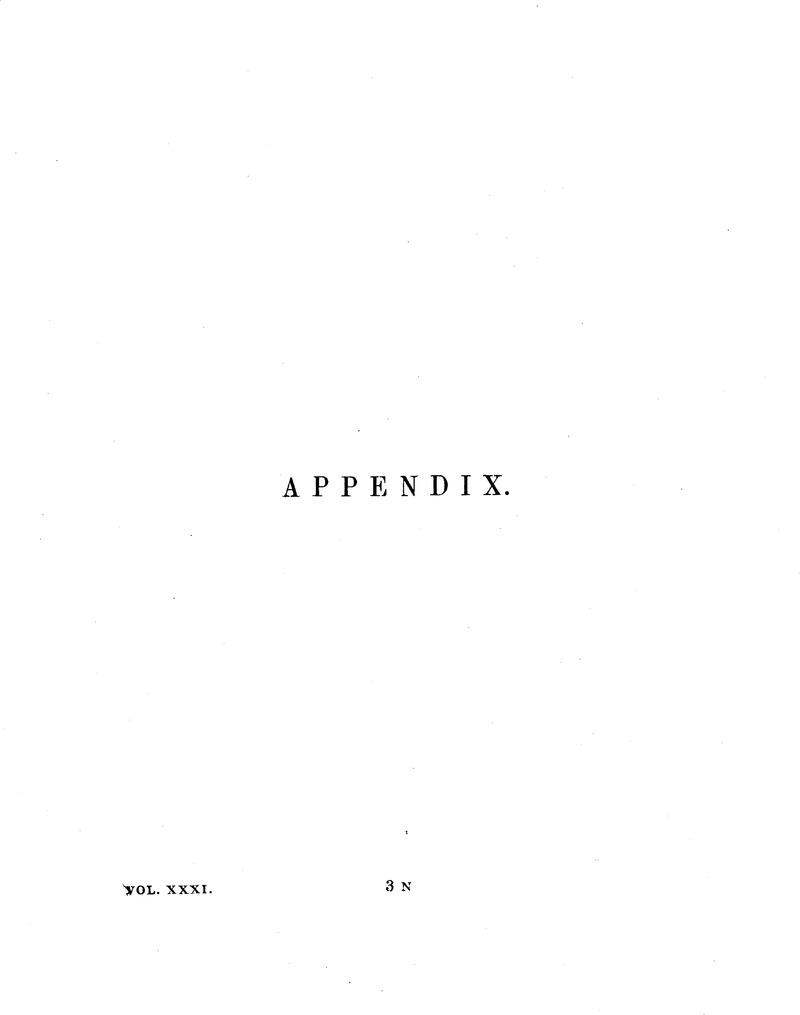No CrossRef data available.
Article contents
Appendix
Published online by Cambridge University Press: 12 June 2012
Abstract

- Type
- Appendix
- Information
- Copyright
- Copyright © The Society of Antiquaries of London 1846
References
page 459 note a Dugdale, Mon. Ang. new edit. VI. p. 1485; Itin. Will. Wore. p. 128; Leland, Itin. III. p. 27; VII. p. 120.
page 462 note a MS. Addit. 4789, fol. 40.
page 467 note a Mr. D. H. Haigh, Numismatic Chronicle, vol. ii. p. 187.
page 468 note a Matt. Paris, sub anno 1200. Roger of Wendover relates the event in precisely the same words.
page 468 note b Vide the same writers under the same year.
page 468 note c Num. Journal, vol. ii. p. 254.
page 468 note d An. CCCCXLVIII, ![]()
![]() . Chron. Sax. Gibson, p. 11.
. Chron. Sax. Gibson, p. 11.
page 469 note a Flores Histor. sub anno 458. According to the same authority the actual removal of the head to Edessa took place in 761.
page 474 note a A document, communicated subsequently to the Society by Mr. George Grant Francis, of Swansea, bore the signature of Sir Rice, and an impression of his signet ring, charged with a raven, and bearing no resemblance to the Thetford ring.
page 476 note a The former Communication will be found in Vol. XXX. p. 490–493.
page 496 note a Bibl. Top. Brit. No. xviii. p. 105
page 501 note a In addition to Mr. Keller's remark it may be observed that the coin in question appears to be a Gaulish imitation of one of those of Philip of Macedon: the letters IΠΠO seen upon it are in all probability a portion of the name Philippos.—H. E.
page 507 note a This Charles of Spain was Charles de la Cerda, one of the original knights of the order “de l'Etoile;” but he did not long enjoy the constableship, having been assassinated by the contrivance of Charles (surnamed the wicked) King of Navarre, from jealousy of de la Cerda's appointment to the earldom of Angoulême.—W. B.
page 507 note b What these knights were to do I cannot conjecture, unless to mark out a spot whereon the Constable's army and the expected succour should fight a pitched battle; or else, possibly, whereon these four knights were themselves to combat, two against two, in the same manner as in the very same year, 1351, thirty Breton knights fought thirty others on the part of England; and also as portions of two Scottish clana fought one another, A. D. 1396—W. B.
page 509 note a This clause is much mutilated, but it would seem, from the portions which remain, that it was to enact that the state and condition of the town should be inspected by these knights and gentlemen, and that the knights should pay daily for the subsistence of themselves and their horses during their sojourn therein.—W. B.
page 509 note b This was father of the Boucicault who was afterwards Marshal of France, taken at Agincourt, and died in London.—W. B.
page 519 note a The indications of the second or outer vallum occasioned the erroneous conclusion that the work had a second foss.
page 519 note b Saxon Chronicle, translated by Miss Gurney, p. 21.




